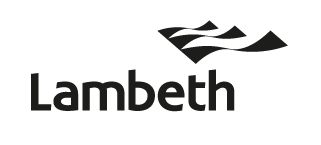Kate Woosey, Financial Adviser and Founder of financial advice service Alex, shares tip to build financial resilience.
Working for yourself often comes hand in hand with irregular income so, as part of the financial health journey, there are a few predetermined building blocks to financial resilience. Starting with your ability to cover your expenditure today and debt management. Then through to insurances (protecting what you have), wills, estate planning, pensions, and lastly investments. Often, you will have a combination of these blocks going at the same time but the main foundations would be to cover your living costs today and having insurances to make sure you have financial support if you are unable to work.
In my job, I see a lot of people willing to take out insurance for an item costing £600, or their pet, but will resist protecting themselves – and haven’t considered the financial impact for them and their family of being unable to work due to illness or even death. However this is something that can be simple to plan for, and for personal financial reasons takes the form of life cover, critical illness cover, and income protection, which I’ll talk you through.
Insurances
Income protection insurance is designed to replace your income if you can’t work due to illness, disability, or permanent disability. If you do return to work, but on reduced pay or hours because of the illness, then income protection can ‘top-up’ your income to the previous level.
One of the top reasons why people claim on income protection is because of mental illness, the next is musculoskeletal problems (joints and muscle pain). Some policies can provide cover for pre-existing conditions, depending on the insurer, and many providers will also include access to free counselling and physio sessions each year.
You should know that there are three main types of income protection cover:
- Low-cost: this is a lower cost than full term and people may find this is enough to get back on their feet. Low-cost income protection pays out for two years at a time and can be claimed multiple times during the term.
- Full term: this is income protection that will payout until a fixed age, death, or return to work.
- Accident, Sickness, and Unemployment: this pays out for a maximum payment period of 12 months and is designed as a short-term solution. It also covers involuntary redundancy; this typically is only relevant for the employed.
Critical illness cover pays out a tax-free lump sum on diagnosis of a covered critical condition, such as cancer, so you can get back on your feet. The payout is often used to repay a mortgage or to fund a change in lifestyle, loss of income, or to pay for changes needed in the home due to the illness, but you can use it as you wish.
This is crucial when self-employed or working for a company with limited benefits.
Life insurance is the cheapest out of the three insurances. In employed terms this will be called ‘death in service’ and will pay out a lump sum to your beneficiaries on death.
Life insurance can be linked with a high debt (such as a mortgage) and is also advised to be taken out if you have dependents, even if you do not work. This is to provide the needed financial support that your dependents need if you are no longer there.
Like with all personal insurance, the younger you begin the policy, the cheaper it is. Critical illness cover also includes child benefits.
Savings
Once you have your protection sorted, savings should come into play. As your income may dip it is important as a freelancer to plan for the lean times, or to help bridge those long payment terms.
As I’m sure you’ve heard, you should aim to build up 3-6 months expenditure (not pay) in instant access cash. Depending on your business structure, this can be either in savings or if you are a limited business you may choose to keep the fund in your business to withdraw when needed.
Accept that you will have good months and bad. To help plan ahead, I find reviewing your income and expenditure and creating a cash flow model helps. This will give you a clear overview of where you could cut down and where your leaner months and the big gains are due. By creating a picture in your head about your financial standpoint this will help to relieve anxiety about the so-called ‘lumpy income’ and help you quantify your spending. I’ve created a budget planner and cash flow template which I can email you on request.
To help guide you I’ve created a budget planner which you can download for free by signing up to my newsletter, and you’ll also receive an email with a cash flow planner.
If you would like to speak about any of the issues raised in this article, I’m offering free one-hour introductory calls to talk through your concerns, email me to book a time that suits you.

Kate Woosey is a financial adviser who set up Alex to provide financial support for freelancers and small business owners to help them engage with their money.
After working in the design industry for eight years, Kate decided to retrain as a financial adviser after seeing a lack of advice that was available and relevant to her as a freelancer. Today, through Alex, Kate offers zero jargon, relatable advice for individuals and businesses, focusing on education, 1-2-1 conversations, and proactive work to increase financial security and wellbeing at any stage of life.



